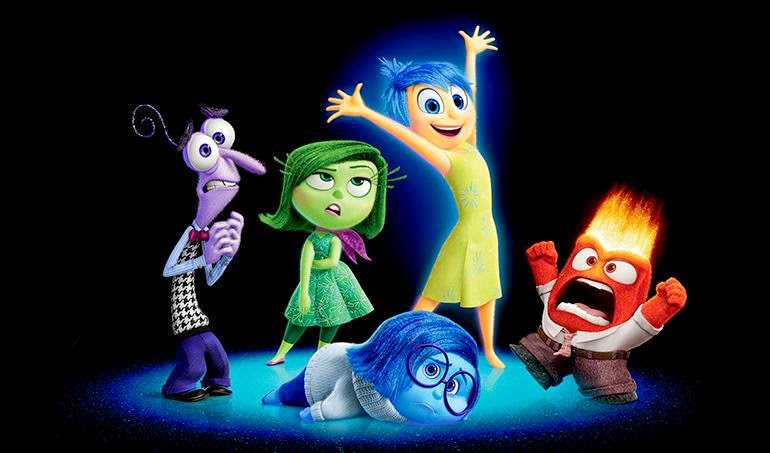Inside out
Synopsis:
Growing up can be a bumpy road, and it's no exception for Riley, who is uprooted from her Midwest life when her father starts a new job in San Francisco. Like all of us, Riley is guided by her emotions – Joy (Amy Poehler), Fear (Bill Hader), Anger (Lewis Black), Disgust (Mindy Kaling) and Sadness (Phyllis Smith). The emotions live in Headquarters, the control center inside Riley’s mind, where they help advise her through everyday life. As Riley and her emotions struggle to adjust to a new life in San Francisco, turmoil ensues in Headquarters. Although Joy, Riley's main and most important emotion, tries to keep things positive, the emotions conflict on how best to navigate a new city, house and school.
Inside Out Official Trailer
Four lessons we can learn from the movie "Inside Out":
1. It's not normal to be happy all the time It's exhausting and a bit desperate. Though Amy Poehler, as the emotion Joy, is adorable and I would like her to be my best friend, she is frenetically attempting to plug up any speck of unhappiness. The urge to banish unhappiness in the movies or in real life is unsustainable, unnecessary and unhealthy.
2. Don't be afraid of sadness It's normal, and even helpful. Scores of books have come out in the last decade cautioning against the pathologizing of sadness. Sadness is an inner memo that shouldn't be hidden away, because it tells us that something important has happened. The sadness will come and it will go. It's temporary. The worst thing that we can do is to feel like it's a hot stove -- that one touch it will singe us.
3. Sadness is a connector Often sadness connects us to each other, which can lead to greater happiness. Without it, there are disconnects -- between people and within one's self. When Riley's dear, but forgotten childhood imaginary friend Bing Bong, is upset that he is no longer relevant to her life, Sadness goes over to console him. Fearful that it will be a disaster like every other moment where Sadness gets involved, Joy tries to intervene before any more damage can be done. But what happens? Sadness sits down next to Bing Bong. "I'm sorry they took your rocket," she quietly tells him, "That must have been hard." As it turns out, Bing Bong just needed an empathic ear, and quickly feels better. Being understood in sadness -- even if we can't "fix" it -- feels good, and helps people move forward.
4. Feelings are usually mixed My favorite thing about "Inside Out" is that it will make my job as a cognitive-behavior therapist easier. When I tell my patients to picture a conversation in their mind between different emotions, the image of Riley's emotions at the Headquarters control panel will quickly pop into their head. I speak to kids every day about changing their relationship with their thoughts and emotions -- engaging in a conversation between different parts of the brain so that no single part dominates, and each emotion gets to contribute.
Sometimes emotions can even collaborate. At the end of the movie, Joy has learned that Sadness is a valuable member of the team, and invites her over to the control panel so the two can operate it together. The result? A new kind of hybrid memory that is both happy and sad. Riley is crying as she misses home, but connecting with this feeling also brings a smile to her face -- after all, it's what brings her back to the people she loves.
Learning from sadness
Every time we see tears in our children's eyes our inner control panel goes through the same process --we want to body dive sadness and get it off our kids -- fast. I would say that this lesson to not fear our children's sadness is the one that we have to relearn just about every time we see tears. I don't want my kids to be sad.
But what's my goal? Is it really to rescue them, wave the magic wand and make it all go away? Or is to help them connect to the important experience they are having -- whether a big deal or a little deal-- and instead integrate those emotions so they don't cause an inner rift later.
This is the role we can do best as parents. It won't be easy, but we have to remember that when our kids are sad, it's not something that's wrong, it's something that's real.


Blogger Comment
Facebook Comment